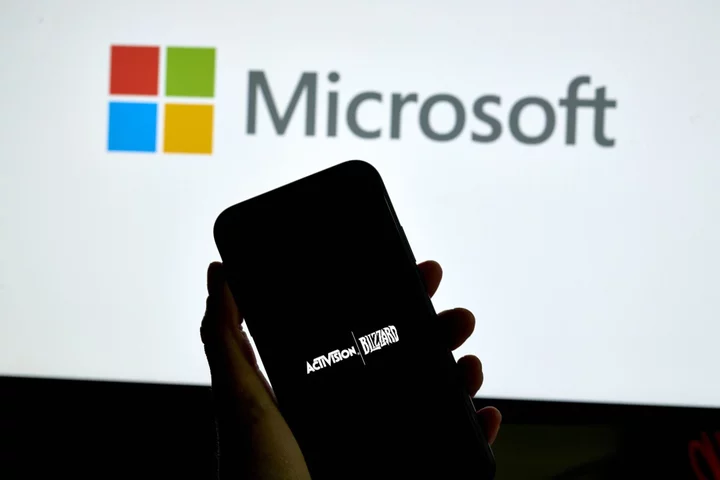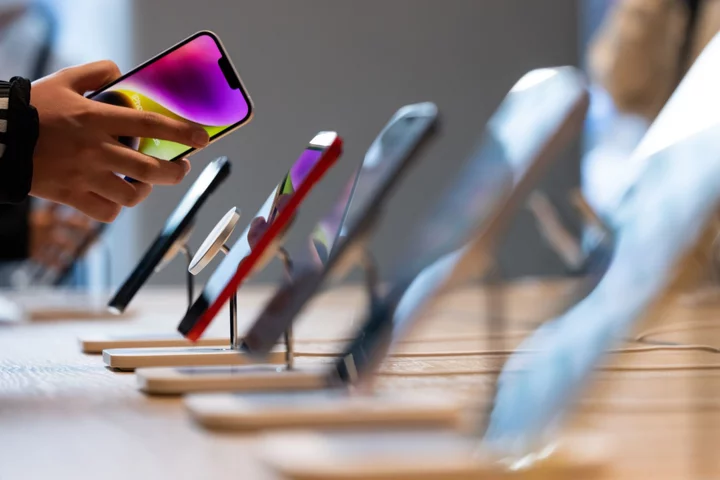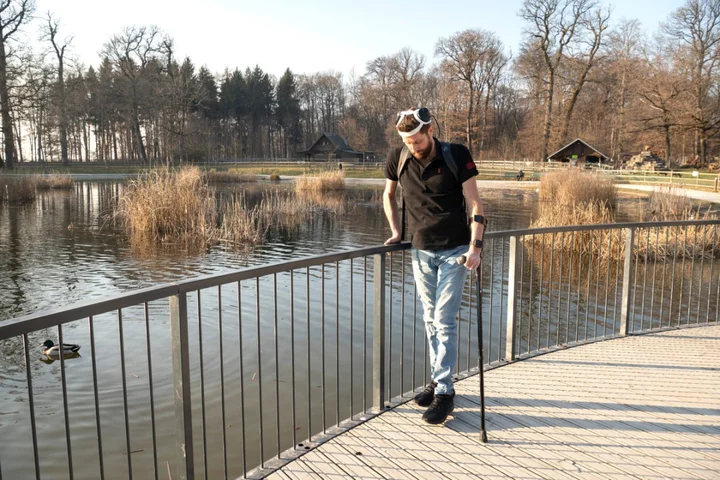
CDL Major 5: 3 Storylines to Follow
Call of Duty League Major 5 kicks off on May 25 with matches that will determine which teams make it to CDL Champs 2023.
2023-05-25 01:53

Netflix’s password sharing crackdown starts now. Here’s what it means for households
Netflix has finally launched its long-awaited crackdown on password sharing in the US and the UK. The move is an attempt to help it grow its subscriptions and profits amid slowing interest in the streaming platform. But it also means that those people who use other people’s accounts – and those who own those accounts – could be facing some significant changes in the way they use the platform. Here’s what the crackdown means for you, and anyone who might be on your account. What are Netflix’s rules about password sharing? Netflix’s rules specifically say that any account is meant for use by one household. It’s very permitted to have more than one person within that household – that is why it offers the “profiles” feature that lets people have multiple lists and viewing histories in one account – but it is not permitted for people to use an account associated with another household. The definition of a household is a little vague, and Netflix defines it as “you and the people you live with”. In practice, that means the other people who live at the same address, at least in terms of ensuring that you won’t get caught up with Netflix’s rules, which are based on location. That doesn’t mean that you can only use Netflix within one house. The company is very happy with people using the app outside of their home, such as when travelling, and again makes allowances for that with features such as being able to download films and TV shows to watch offline. The rules limiting Netflix accounts to one household have long been in place, however. What has changed is that the company is now going to start enforcing them, by kicking people out of accounts if they don’t believe them to be within a household. What does the crackdown mean? The new changes mean that Netflix will be using a variety of tools to spot when people are using another household’s account – and prevent them from doing so. That spotting will happen using a variety of tools, but is primarily about checking a devices IP address and other identifiers to see whether its usage patterns suggest it is not following the rules. If that happens, then Netflix will stop that person accessing the account. Instead, they’ll offer new ways for those people to get online properly. Over time, Netflix expects that there will be some cancellations from people who have so far been sharing accounts, it said in its recent results. But tests have shown that many of those people then come back again, and that it overall leads to more people paying for subscriptions, which is why it has chosen to press ahead. What are the options for people sharing passwords? Netflix is giving those people who have been sharing accounts two different options. First, they can “transfer a profile”. That means the person sharing the account can get their own, new membership but that it will include all of their watch history and other data, so that they don’t lose out when they start over again. Otherwise, you can “buy an extra member” for your account, which essentially means that the person will stay on your account but you will have to pay for them. That is slightly cheaper than buying a full-blown new login, at £4.99 in the UK or $7.99 in the US. What about people who share their accounts? If you are the person lending out your account, rather than the one borrowing it, there isn’t necessarily anything you need to do. Netflix isn’t pursuing people who have shared their password. It does however encourage users to check who’s using the account, to avoid getting told off for lending it. That can be done by heading to Netflix’s settings, which offers the option to sign out any devices that are logged in, as well as changing the password so they can’t get back in. What about if I travel a lot? If you are using your account outside of the house, there’s no big reason to worry. You can still do so, though you might receive some warnings from Netflix if you are away for a long time. During the rollout, Netflix said that it had received some feedback about people getting the warnings because they had been travelling, rather than sharing their accounts. It suggested that has been fixed in the new version of the technology that is monitoring those logins. Read More Netflix begins crackdown on password sharing in the UK and US Netflix begins sending emails to UK customers about account sharing Netflix launches account crackdown in US and UK Teenager given criminal behaviour order after entering home for TikTok ‘prank’ Meta Ireland to cut about 490 jobs New brain technology helps paralysed man with severe spine injury walk again
2023-05-25 01:26

Microsoft Appeals UK Decision to Block Activision Mega Deal
Microsoft Corp. formally filed its appeal against the UK antitrust watchdog’s decision to block its $69 billion Activision
2023-05-25 01:15

Teenager given criminal behaviour order after entering home for TikTok ‘prank’
A teenager has been issued with a criminal behaviour order and fined hundreds of pounds after entering a home as part of a TikTok “prank” video. Bacari-Bronze O’Garro, 18, of Manor Road, Hackney, London, appeared at Thames Magistrates’ Court on Wednesday. O’Garro appeared in court wearing a black hoodie and a face mask. He spoke only to confirm his name, age and address, and to admit to one count of failing to comply with a community protection notice. Varinder Hayre, prosecuting, told the court that O’Garro was issued with a community protection notice on May 11 last year, and that two of its conditions were that he not trespass on to private property. Ms Hayre said that he then breached that notice by entering a home on May 15 this year. “He went to the home address of the victim,” she said. “The door of the property was open. “Mr O’Garro walked into the property and immediately walked down the stairs. “He was stopped by the home owner. “He went into the living room. He sat down on the sofa and said ‘Is this where the study group is?'” He has caused the family a lot of distress Varinder Hayre, prosecuting Ms Hayre said: “He was asked to leave multiple times by both the victim and the husband.” She added: “It was discovered that he had filmed the entire incident for a TikTok trend about walking into random houses.” Ms Hayre said: “He has caused the family a lot of distress. “The faces of the couple and their two young children can be seen.” She told the court that the mother was under the impression that O’Garro was attempting burglary, and added that the mother takes her family’s privacy “very seriously”. “This has caused the victim great concern,” Ms Hayre said. Lee Sergent, in mitigation, said that O’Garro had apologised to the family. He said that his client was raised by a single parent and had a difficult upbringing. “Mr O’Garro grew up in a single parent household,” Mr Sergent said. “He had an extremely difficult childhood. “He is an intelligent young man and a young man with some potential.” He said that his client was neither in work nor education, but was instead in receipt of Universal Credit. Mr Sergent added that his client had made some legitimate social media content, including playing games and discussing conspiracy theories. Judge Charlotte Crangle issued O’Garro with a two-year criminal behaviour order. The order included that O’Garro must not directly or indirectly post videos on to social media without the documented consent of the people featured in the content, that he must not trespass into private property, and that he must not attend the Westfield Centre in Stratford. She also ordered O’Garro to pay a fine of £200, as well as a victim surcharge of £80 and costs of £85 – totalling £365. Read More Charity boss speaks out over ‘traumatic’ encounter with royal aide Ukraine war’s heaviest fight rages in east - follow live New brain technology helps paralysed man with severe spine injury walk again Meta Ireland to cut about 490 jobs Netflix begins crackdown on password sharing in the UK and US
2023-05-25 00:59

Apple Plans to Turn Locked iPhones Into Smart Displays With iOS 17
Apple Inc. is planning a new interface for iPhones that shows information such as calendar appointments, the weather
2023-05-25 00:55

In a new BMW sedan, drivers can change lanes using just their eyes
In the new BMW 5-series sedan, unveiled Wednesday by the German luxury automaker, drivers will be able to change lanes on the highway just by looking to the side.
2023-05-25 00:28

Meta's business groups cut in latest round of layoffs
Facebook-parent Meta on Wednesday began cutting employees in its business groups as part of a previously announced round of layoffs, according to social media posts from impacted workers.
2023-05-24 23:50

Biden Taps Energy Department to Find Climate-Friendly Alternatives for Jet, Shipping Fuels
The Biden administration is marshaling the power of the Energy Department to find low-carbon alternatives to petroleum-based transportation
2023-05-24 23:27

New brain technology helps paralysed man with severe spine injury walk again
A man paralysed in a bicycle accident more than a decade ago has regained the ability to stand and walk naturally, using technology developed by researchers in Switzerland. Neuroscientists at the Ecole Polytechnique Federale de Lausanne (EPFL) have created what they call a “wireless digital bridge” which is able to restore the connection lost between the brain and the spinal cord. This digital bridge is a brain–spine interface which allows Gert-Jan Oskam to regain control over the movement of his legs, enabling him to stand, walk and even climb stairs. The team said their technology also enabled Mr Oskam to recover some of the brain function he had lost since his accident, where he was able to show motor skills when the digital bridge was turned off. According to the researchers, this “digital repair of the spinal cord suggests that new nerve connections have developed”. Mr Oskam, 40, an engineer from the Netherlands, was living and working in China when he had a cycling accident in 2011. He injured his spinal cord and lost movement in his legs. Neurosurgeon Jocelyn Bloch, who is a professor at the EPFL, said: “When we met Gert-Jan, he was unable to take a step after a severe spinal cord injury.” Gregoire Courtine, a professor of neuroscience at the EPFL, said: “To walk, the brain must send a command to the region of the spinal cord responsible for the control of movements. For the first time after 10 years (I was able) to stand up and have a beer with some of my friends, so that was pretty cool Gert-Jan Oskam “When there is a spinal cord injury, this communication is interrupted. “Our idea was to re-establish this communication with a digital bridge – an electronic communication between the brain and the region of the spinal cord that is still intact and can control the leg movements.” Mr Oskam underwent two surgeries to implant electrodes in the brain and the spinal cord to make the digital bridge. The technology uses artificial intelligence to convert movement thoughts into actions, establishing a direct link between the brain and spinal cord regions involved in walking. Prof Courtine said: “For the first time this digital bridge bypasses an injury, restoring the communication between two regions of the central nervous system that are disconnected.” The team said their findings, published in the journal Nature, establish a framework where natural control of movement can be restored after paralysis. Mr Oskam said he is able to walk at least 100 metres or more, depending on the day. He is also able to walk on crutches, when the implant is switched of, raising hope that technologies such as these could restore lost nerve function. Prof Courtine said: “What we observed is a digital repair of the spine, a recovery of neurological function that he has lost for many years.” Mr Oskam said: “For the first time after 10 years (I was able) to stand up and have a beer with some of my friends, so that was pretty cool.” Read More Charity boss speaks out over ‘traumatic’ encounter with royal aide Ukraine war’s heaviest fight rages in east - follow live Meta Ireland to cut about 490 jobs Netflix begins crackdown on password sharing in the UK and US Netflix begins sending emails to UK customers about account sharing
2023-05-24 23:23

Apple launches new privacy campaign highlighting importance of keeping health data secure
Apple has launched a new campaign highlighting the importance of keeping health data private – and the dangers of not doing so. The ads look to highlight iPhone features that Apple says ensure that it is able to collect data on its users, but not cause them embarrassment or threats by allowing other people to get hold of it. It does so by depicting a doctors waiting room in which the various health complaints of patients are broadcast to everyone, and suggests that people who are not sufficiently protecting their privacy may accidentally be doing the same on the internet. Lauren Cheung, a doctor and senior manager on Apple’s clinical team, told The Independent that the campaign grew out of Apple’s commitment to the “three core principles throughout all of our work on health: actionability, scientific validation, and privacy”. That means ensuring that the data collected is useful, and that it is “based in science” to ensure that it is accurate, she said – but also that it is protected. “First, there’s probably nothing more sensitive than health data,” she said, “so it should always be a priority to protect it. “Second, we believe our users should expect the same confidentiality from their technology as they do from their doctor. I’m a physician myself, and I know just how sensitive some conversations are; my patients are telling me information that sometimes they’ve never told anyone else.” The campaign will come in the form of the new TV ad – which is voiced by actor Jane Lynch and directed by Craig Gillespie, the director of I, Tony and Cruella – as well as billboards in 24 regions around the world, Apple said. But Apple is also publishing a white paper online that highlights the ways that Apple protects health data on the iPhone and other products. That includes encrypting all of the data that is stored within the Health app, apart from the Medical ID that is available to people who find a phone and gives important information that might be used to treat its owner. It also means that data in the Health app can only be shared with other apps when owners give their explicit permission. That sharing does mean that third-party developers are able to get access to people’s data, and so those users are not only trusting Apple but also other companies. But Apple stressed that those developers are nonetheless subject to rules that try to keep that data safe. That includes the “granular control that users have over sharing their health data”, said Katie Skinner, head of privacy engineering at Apple. That gives users the option not only to choose who they are sharing health information with, but also which bits of their health information they intend to share. The same granular choice is also present when Apple conducts studies in collaboration with different organisations, which have already worked to gather information that helps research on topics such as heart health and hearing levels. Users can choose what they share with those researchers and Apple is not told whether people have done so. “Additionally, any third-party app that reads or writes health data must comply with our terms in the developer agreement and our App Store guidelines”, which includes rules that require that the data is only used for health and fitness purposes. That requires for instance that it is not used for advertising purposes or sold on to other companies who might do the same. If third-party apps do not comply with those rules, then they can be kicked out of the App Store. Apple also has an app review process that is intended to ensure that any apps comply before they are made available. Ms Skinner also said that a member of the privacy team works on every new health feature, which “really means that they’re designed with privacy in mind”. “Apple believes privacy is a fundamental human right, and so we’ve built privacy protections into each one of our products and services,” she said. Apple has run similar privacy campaigns in the past, highlighting for example its work to protect users’ browsing information and to stop it being sold through data brokers. It did not point to any specific incident that had led it to focus on health data this time around, but said that customers were particularly focused on the security of their health data. “I think we're proud of the great health story we have for privacy,” said Ms Skinner. “Privacy is important across the board, but we know users believe that health data is really sensitive.” Promoting the privacy of Apple’s health services also ensures that people are able to trust them, said Dr Cheung, ensuring that people feel comfortable with using their devices to track their health. “We know that health data is sensitive – it’s one of the most sensitive pieces of information you can have,” she said. “And we do really feel like it is important for users to trust her devices the same way that they would trust their doctors. “We want to support our users in understanding that the same applies to their health information on our devices.” Apple’s launch of the campaign came just days ahead of its annual Worldwide Developers Conference event, where it shows off new software updates for all of its platforms. That is likely to include new changes for the Apple Watch and its WatchOS operating system, which might include new updates to the health and fitness tools that are central to Apple’s marketing of the wearable. Read More Apple is making a ‘mixed reality’ headset. Here’s what that future might look like Montana TikTok ban ‘unconstitutional’ and ‘impossible to enforce’ Apple and Samsung use AI to make phones more accessible for disabled people Apple releases its first transparent product in years New iPhone feature can recreate your voice perfectly after just 15 minutes 75% of Irish data watchdog’s GDPR decisions since 2018 overruled – report
2023-05-24 22:52

Starlink can now be used on the move ‘almost everywhere on earth’
SpaceX has launched a new service for its space-based Starlink internet service that allows customers to connect from nearly anywhere on the planet while in motion. Starlink Mobility uses a receiver that has a wide field of view and improved GPS to connect to SpaceX’s constellation of more than 4,000 low-Earth orbit satellites. SpaceX boss Elon Musk tweeted that it works “almost everywhere on Earth”, including the middle of oceans and deserts. The first customers to try out Starlink Mobility are a fleet of school buses in Arizona, SpaceX said, allowing students to “stay connected and complete their homework” while travelling to and from school. SpaceX said the new service is “ideal for mobile businesses and public sector use cases, including trucking, buses, shuttles, and emergency response”. Subscribers to Starlink Mobility, which costs $250 per month on top of a one-time hardware fee of $2,500, receive network priority over other users during peak hours, meaning emergency responders should avoid losing internet connection. “Starlink Mobility provides 100 per cent coverage in your country and every country where Starlink service is available across the globe,” SpaceX states on its website. “Plans can also be used on the ocean, with connectivity available in the vast majority of the Earth’s oceans and seas.” The Starlink satellite dish, which is a next-generation version of its standard hardware, is designed to be permanently installed on a customer’s vehicle, offering the same download speeds of up to 220 Mbps. SpaceX achieved global coverage of its Starlink internet network last year, four years after launching the first batch of satellites into space. Despite this, some countries have blocked Starlink from operating in its country, such as China and Iran. SpaceX is hoping to launch a satellite-to-cellphone service that would allow users to connect to its internet constellation without the need for additional hardware, however some service providers fear that it will interfere with existing wireless services. AT&T in the US urged the Federal Communications Commission (FCC) to reject SpaceX and T-Mobile’s proposal, claiming it would “jeopordise or inhibit” its own terrestrial service. Testing of the satellite-to-cell service is expected to begin later this year. Read More SpaceX launches two missions just hours apart ‘It’s becoming like an airport’: How SpaceX normalised rocket launches Apple launches new campaign about the dangers of losing your health data Meta Ireland to cut about 490 jobs This is how AI ‘superintelligence’ would replace us as the dominant lifeform on Earth
2023-05-24 22:51

Amazon’s Answer to ChatGPT Seen as Incomplete
Amazon.com Inc.’s cloud customers are clamoring to get their hands on the ChatGPT-style technology the company unveiled six
2023-05-24 22:46
